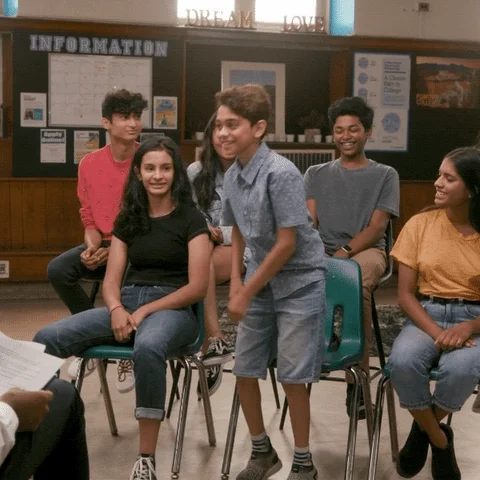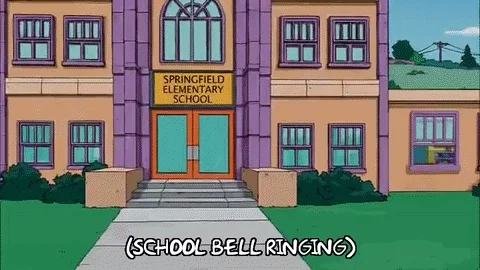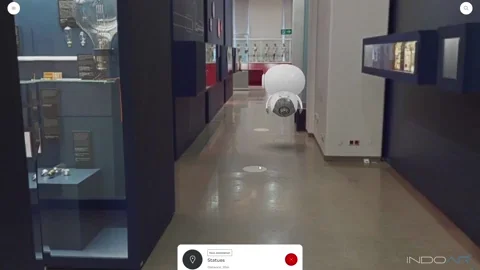
This logo isn't an ad or affiliate link. It's an organization that shares in our mission, and empowered the authors to share their insights in Byte form.
Rumie vets Bytes for compliance with our
Standards.
The organization is responsible for the completeness and reliability of the content.
Learn more
about how Rumie works with partners.
 Photo by Avel Chuklanov on Unsplash
Photo by Avel Chuklanov on UnsplashI remember my first day as an ESL (English as a second language) instructor. 20 minutes before my first class in front of 60 Chinese university students, I wanted to pack my things and catch the next flight outta there!
Sure, I had an ESL teaching certificate, but I had never taught in front of a class before and I had a fear of public speaking, so my body went into panic mode and dry heaves.

I slowly walked up the stairs to the 5th floor and entered a noisy room that immediately went silent when I entered. "Welcome to your first English class in China," I thought.

But hey, your first day doesn't have to be a rollercoaster of panic and questionable sound effects like mine. Whether you're globe-trotting to teach in far-off lands or holding down the fort in your hometown, your teaching journey is what you make of it.
These 3strategies could turn your first day from a nervous stomach mess to a triumph of teaching finesse!
1. Build Positive Relationships
Alright, imagine your classroom environment as a well-choreographed dance, and positive teacher-student relationships are the smooth moves that make the routine pop!

It's not just about learning names or saying "hi" at the door — it's about creating an atmosphere where every student feels like they've got a VIP pass to the learning party.
You know you're winning when even the shyest students start tapping their feet to the beat of your lessons. Here are some tips on how to create that vibe:
Show attention: When students feel seen, heard, and valued, it creates a conducive environment for learning.
Establish routines: When students know what is expected of them academically and behaviorally, it helps create a positive and focused learning environment.
Create an inclusive environment: Contribute to a positive atmosphere by fostering a sense of belonging, respect, and openness among students.

And hey, don't forget to share the groove with your fellow teachers — because supportive colleagues can turn a regular Wednesday into a dance-off of collaboration and shared victories!

It's not just about what happens inside the four walls — it's about building a community that rocks the entire school's vibe.
Quiz
What are effective ways to develop a positive atmosphere with students? Select all that apply:
Personalized greetings (such as handshakes), keeping a certain structure to each class session, and including each student in the discussion are great ways to develop a positive environment. It might be tempting to connect with students online through video games outside of class, but that would likely violate your teacher's code of conduct
2. Use Technology Effectively
That first day of ESL class I mentioned earlier only got worse. I had prepared a nice, long PowerPoint presentation with cool pictures and graphics, only to find the computer didn't work. So, I had to write and draw everything on the chalk board. Doh!

If you have the working components, integrating tech isn't about replacing the classics — it's like adding special effects to your teaching masterpiece.
You're not saying goodbye to chalkboards and textbooks, you're saying hello to a dynamic duo of traditional wisdom and tech wizardry.
Think about using these tech tools to keep your students engaged.
Interactive quizzes: They're like the superheroes of engagement, giving instant feedback, tracking progress, and throwing a tech party that makes learning a blast!
Collaborative projects: Turn your classroom environment into a creative hub, where students team up, brainstorm ideas, and craft something amazing together.

Virtual field trips: They're like magic carpet rides for your class — exploring far-off places, meeting fascinating characters, and all without leaving the comfort of your desks!

Technology can add an entirely new dimension to your classroom environment, making it fun and engaging. Remember, teaching isn't just about lessons — it's about crafting an adventure where every student feels like the hero of their learning story.
Quiz
Which of these examples can be used to improve the classroom environment? Select all that apply:
Any technology where students' learning experience would benefit increase the positive atmosphere. Creating a group for a video game doesn't benefit learning.
3. Be Reflective and Adaptable
After several weeks of teaching ESL in China, I eventually found my stride. I was able to relate to my students through pop culture references and showing interest in their culture.
I learned how to use the campus computers to show my masterpiece presentations and even created a social media class group through WeChat (the Chinese version of FaceBook).

As a teacher, you'll find every class and every student is different. So, it is important to reflect on what you've learned and adapt it to every situation.
I've had some students whose English speaking ability was flawless, while others had trouble forming simple sentences. It's your job to make the class useful for everyone and you can do this by remembering the following tips:
Stay flexible by being the MacGyver of lesson plans, ready to improvise with a smile and a toolkit of teaching tricks.
Reflect on your practices consistently. Ask yourself what's working and what isn't. Keep informed on new teaching methods and tools.
Make adjustments as needed to keep things fresh and effective. A group assignment on pop culture may work very well, but you'll need to update the lesson every semester.


Quiz
You taught a successful English lesson on music using The Backstreet Boys as your focus, but this was several years ago. What pop group would show adaptation?
While the other groups may have been popular during their time, Blackpink is certainly one of the more well-known pop groups of today.
Take Action
Remember these strategies are like your secret sauce — customize them to match your classroom flavor! Your unique style, quirks, and class dynamics? That's the magic potion.
Now go sprinkle it around and watch the positive vibes turn your space into a learning party. Keep being the awesome, one-of-a-kind teacher that makes education a joyride!

Check out these Bytes for more teaching strategies you can use in your new classroom environment:
This Byte has been authored by
Kevin Kepple
Grad Student | TA
MS